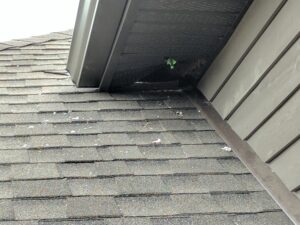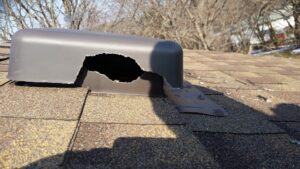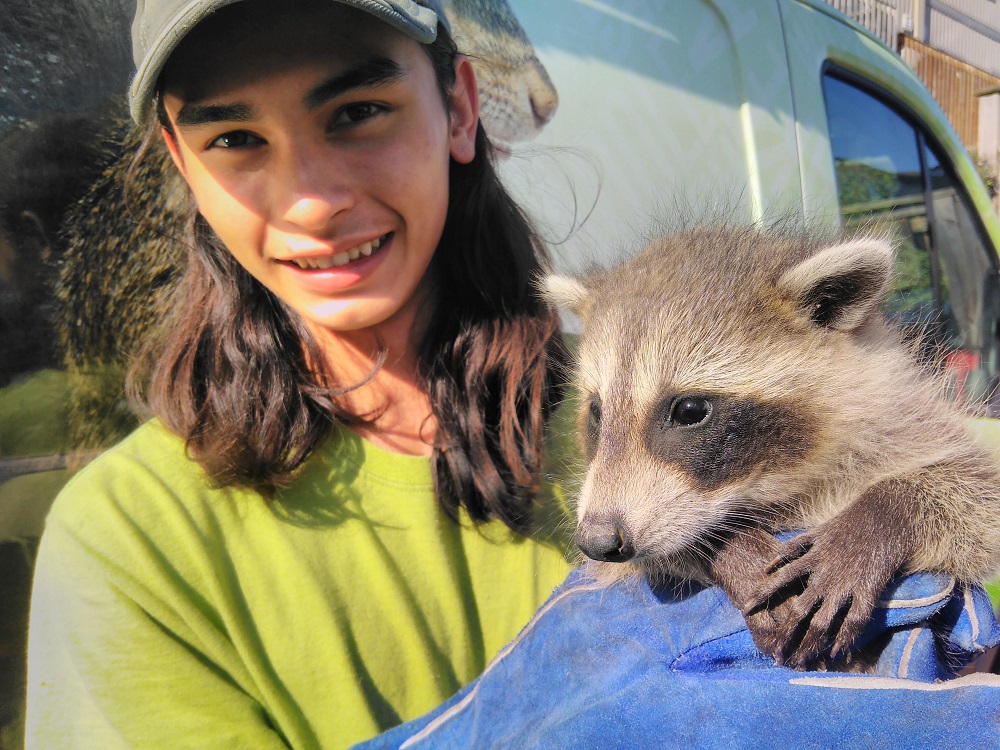Raccoons not only look like masked bandits, often they act like ones too. They are incredibly smart animals and their resourcefulness should never be underestimated. At Skedaddle we have witnessed countless times how raccoons can scale great heights, find obscure access points to sneak into the most unlikely places and use their strong paws to get into just about anything. While we have found raccoons in all sorts of interesting places, we are most often called out to remove these masked home invaders from attics, and a common question that we are asked by our customers is, ” how did they even get on my roof?” The short answer is by using their instincts and any available leverage. If there is a weak spot on your home, you can trust a raccoon to find and exploit it.
Why is Your New Home not Wildlife Proof?
As CEO Bill Dowd states, “The first thing out of a homeowner’s mouth when we come to a B & E job is, why didn’t the builder make it animal proof?” No matter how good or experienced your builder is, wildlife proofing your home is not their priority. As a builder, their job is to build properties that are up to code and they are not thinking about keeping wildlife out. “That’s where we come in,” says Bill, “we are there to ensure that your home is 100% animal-proof and give you that lifetime guarantee and peace of mind that you are looking for.”
The Most Common Raccoon B & E Weak Points
Every home has its weak points. It doesn’t matter if your home is one year old or one hundred years old, it can easily have weak spots that resourceful raccoons will exploit to gain entry. If you have a brand-new house or a house that is only a couple of years old, you might think that you are well protected from a raccoon invasion. But think again! Roof soffit intersections, downspouts, and roof vents can all be used to a raccoon’s advantage when they are casing your property for potential entry points.
1. Roof Soffit Intersections

Fascia and soffit are used as part of the installation of your roof. When you look at the outside of your house, the fascia is the visible horizontal section you see at the end of your rafters. This architectural feature along the eaves of your home is more than just cosmetic, it hides the ventilation into your attic and helps protect your house by keeping out pests such as birds, bats, squirrels, and raccoons. An exterior soffit is located beneath the rafter tails or eaves and it is used on the exterior of your home to close the gap beneath the eaves.
A soffit is typically made out of flexible material, like aluminum, wood, UPVC or vinyl, and helps protect the rafters from weather damage. If your soffit is not well maintained it provides a point where water can collect and when we visit a home and see a massive amount of staining in the corner of the roof soffit intersection, we know that this is an easy entry point for raccoons. A raccoon can feel the weak point in that area, and they will push it up to enter your attic. It’s as easy as that for a resourceful raccoon with B & E experience. Ensuring that your soffit and fascia are correctly installed and waterproofed is the best way to prevent raccoons from using this as an entry point into your home.
2. Downspouts

A downspout is designed to drain the water from your eaves but for a raccoon, it can be a convenient ladder onto your roof. The downspout will also have a nice curve around the soffit and this a pretty good seat for a raccoon to sit up and push onto the soffit, allowing it to use all its strength to make an entry point. Fortunately, it is relatively easy to see if a raccoon is gaining access to your home via your downspouts. As they climb, they leave paw prints and the staining allows us to see exactly where they are heading and by following their trail we can quickly find their entry point.
3. Roof Vents

Roof vents are installed to remove hot air and moisture from your home, and they lead straight into the attic. This makes roof vents very enticing for raccoons. They simply have to chew, rip and pull at the plastic or metal vents and before you know it, they are in. This is a brute force entry point that leaves your attic exposed to the elements. As the cold, wet weather sets in, homeowners usually call us because they hear the sound of the raccoons in their roof or they see a leak on the ceiling – a clear sign that the roof vents have been damaged.
How to Prevent a Raccoon B & E
Good maintenance is key to preventing a raccoon home invasion. Do not put home repairs and maintenance on the back burner as opportunistic wildlife are always waiting to take advantage of any weak points on your house. All a raccoon needs is to find one weak spot on your home and they are in, no further invitation required. And once a raccoon has entered your attic, the damage can be extensive and the bills even more so. Raccoon damage is not pretty and once the masked bandit has been removed you will be faced with attic repairs, new insulation, new drywall and in severe cases even a new roof. If you want to prevent a raccoon B & E on your property you must never ignore the signs that your home is in need of some repairs. You have been warned; any rough patches, holes, damaged roof shingles and vents will be taken advantage of by a raccoon looking for a warm spot to spend the winter.
Don’t do DIY Removal
In winter many species of wildlife go into hibernation mode, but the females could be pregnant and will eventually give birth in their chosen den. If you take wildlife removal into your own hands, you run the risk of trapping them in your attic where they will panic and starve. A trapped raccoon will do anything to get out of your attic, leading to extensive damage and even entry into your living space. If you wait for them to leave your attic and then close up their entry point, you could trap the babies inside and the mother can do a lot of damage trying to break back in and if she can’t, the babies will be left to starve. We have decades of experience removing raccoons and their families from attics. We know how to safely remove the mother and reunite her with her babies outside your home. If you have a problem, please call us to remove the raccoons humanely and safely. Ensuring a happy ending for all.
Always Call the Experts
Skedaddle Humane Wildlife Control specializes in removing and excluding wildlife from homes. We safely remove any animal home invaders and make sure that your property is secure against future incursions. Our techs will secure the perimeter and screen any entry points with galvanized steel on the exterior of vents to prevent future damage.




